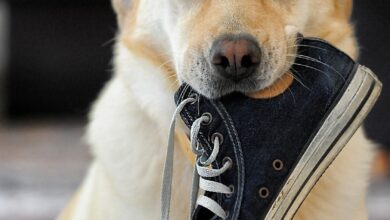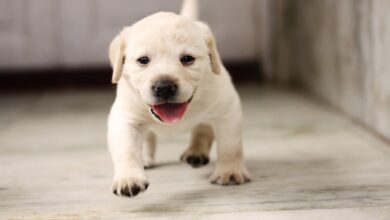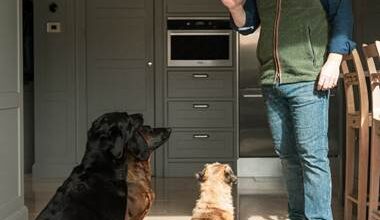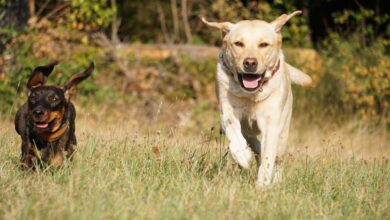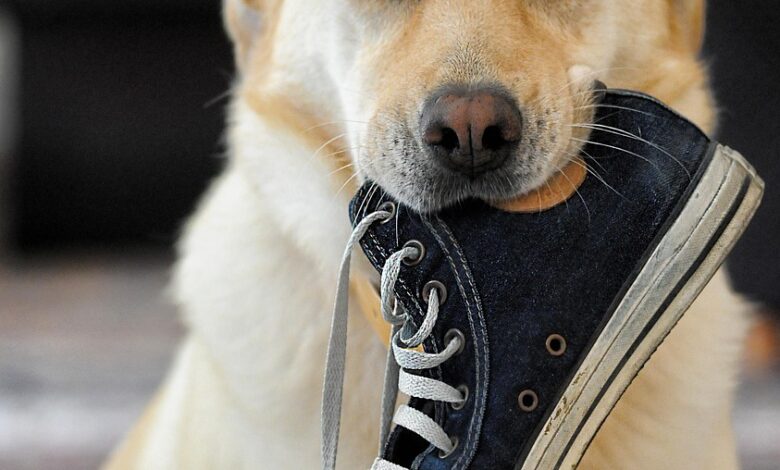
BY STAFF WRITER
Labradors are smart, energetic, and social, but they can develop behavioural issues like leash reactivity, resource guarding, or destructive chewing. Below are detailed step-by-step personalized training plans to address each behaviour.
Leash Reactivity: Teaching Calm Walks
Why Do Labradors React on the Leash?
Frustration: They want to greet people/dogs but can’t.
Fear or Anxiety: They feel trapped and react defensively.
Overexcitement: They get too stimulated by new sights/sounds.
Goal: Teach your Lab to remain calm and focused on you instead of barking or lunging.
Step-by-Step Leash Reactivity Training Plan
- Use the Right Equipment – a Front-clip harness (like the PetSafe Easy Walk) gives better control and a 6ft leash (avoid retractable leashes to maintain control).
- Train a “Look at Me” Command
- Hold a treat near your eyes and say, “Look at me.”
- When your Lab makes eye contact, say “Yes!” and reward.
- Practice daily until they focus on you instead of distractions.
- Manage Distance from Triggers
- If they react at 10 feet away from a dog/person, start at 15 feet and reward calmness.
- Slowly decrease distance over multiple sessions.
- Use Counterconditioning (“See That = Treat!”)
- The moment they see another dog/person, give a high-value treat.
- This changes their reaction from barking/lunging → calm expectation of a reward.
- Redirect Before They React
- If they get too fixated on a trigger, say “Let’s go!” and turn away.
- Move in the opposite direction and reward them for following.
- Training Sessions: 10-15 minutes per walk.
- Start in Low-Distraction Areas, then move to busier environments.
Common Mistakes:
- Letting them pull toward dogs – this reinforces excitement/reactivity.
- Scolding them – reactivity is often based on fear, and punishment can make it worse.
Resource Guarding: Teaching Sharing & Trust
Why Do Labradors Guard Resources?
Instinct: Some dogs naturally protect food, toys, or space.
Past Experiences: If they lost food/toys before, they might fear it happening again.
Lack of Training: They never learned that giving things up = good rewards.
Goal: Teach your Lab that sharing resources leads to positive outcomes.
Step-by-Step Resource Guarding Training Plan
- Hand-Feed Part of Their Meals
- Give small portions from your hand while they eat.
- This builds trust and prevents possessiveness.
- Train a “Trade” Command
- Offer a low-value toy and say “Trade.”
- Show them a high-value treat—when they drop the toy, reward them.
- Gradually work up to higher-value items (bones, food bowls, etc.).
- Approach While Adding (Not Taking)
- As they eat, drop extra tasty food (chicken, cheese) into their bowl. This teaches them that your presence near food brings more, not less.
Desensitize to Handling
Gently touch their bowl while feeding, then immediately give a treat. Do this gradually, ensuring they remain relaxed.
Practice with Toys and Chews
- If they growl over a toy, don’t yank it away—instead, distract them with another toy or treat.
- Reward when they give up the object voluntarily.
- Training Sessions: 5-minute short exercises multiple times a day.
Practice with Different Items: Toys, bones, food bowls, and even resting spots.
Common Mistakes:
- Punishing growling – this suppresses warning signs but doesn’t fix the problem.
- Forcing items away – this makes them guard resources more aggressively.
- Destructive Chewing: Teaching What’s OK to Chew
Why Do Labradors Chew on Everything?
- Teething (Puppies): They chew to relieve gum pain.
- Boredom: Lack of mental stimulation leads to destructive chewing.
- Anxiety or Stress: Chewing releases calming endorphins.
Goal: Teach your Lab to chew only on appropriate items and avoid household destruction.
Step-by-Step Destructive Chewing Training Plan
- Provide Approved Chew Toys
Rubber chew toys are great for aggressive chewers.
Frozen carrots or ice cubes help puppies with teething pain.
Rotating toys keeps them exciting—switch them out every few days. - Redirect Immediately
- If you catch them chewing a shoe or furniture, say “No” calmly and take it away.
- Immediately replace it with an approved chew toy and praise them.
- Use a “Leave It” Command
- Hold a low-value object and say, “Leave it.”
- When they look away or ignore it, say “Yes!” and reward.
- Slowly increase difficulty by practicing with different objects.
Use Taste Deterrents
- Spray bitter apple spray on furniture, shoes, or off-limits areas.
- Most dogs dislike the taste and will stop chewing.
Increase Physical and Mental Exercise
- A tired dog chews less.
- Increase walks, playtime, and puzzle toys to prevent boredom chewing.
- Training Sessions: Short daily redirections + 10-minute structured training.
Supervise Until Trained: Use a crate or baby gate when unsupervised.
Common Mistakes:
- Giving old shoes as toys – this confuses them about what’s allowed.
- Scolding after chewing is done – dogs won’t associate the punishment with the past action.
Final Training Tips for Success
- Be Consistent: Everyone in the household should follow the same training rules.
- Keep Sessions Short: 5-10 minutes per behaviour for best results.
- Use High-Value Rewards: Treats, toys, or praise to reinforce good behaviour.
- Prevent Before It Happens: Manage the environment (gates, crates, toy rotations)


